The famous St. Louis Art Museum debuted their new East building to the public on June 29th. Weightless and airy are just a few words to describe the white oak floors, dark polished facade, skylights, and concrete coffers. Designed by British architect David Chipperfield the expansive East building is 210,000 square feet and Gold LEED certified. St. Louisians should be proud!
Even though the Art Museum is a large project the same sustainable elements can be incorporated into your home renovations too. A lot of people get the idea that designing green or eco-friendly cost millions but in reality it will save you millions. Follow with me as I break down some of the elements used in the East building to show you that it is possible to update sustainably on an individual level.
WINDOW SHADES
In three of the building’s galleries floor-to-ceiling windows compliment gorgeous views of Forest Park and the Art Museum’s sculpture garden. To continue that open energy designers have created a special shade system triggered by sunlight to protect art work from over sun exposure without compromising the atmosphere it suggests.
As an individual Mermet fabric shades are designed for solar protection, energy savings, as well as acoustical comfort. Mermet is a USGBC member that continues to introduce new sustainable fabrics and technologies that reduce up to 100% of harmful UV radiation. As much as Mermet values their customers they also continue to commit to educating associates and consumers about green design.
RECYCLED SAND AND ROCK
Who knew the exterior walls connecting the two buildings and the entrance steps are composed of trap rock and sand from Wisconsin and Missouri rivers? Reusing a plentiful resource is a great way to achieve an eco-friendly balance as well as bring an aesthetically pleasing look to the space.
To be able to apply this element in your home you can use Curava® recycled glass surfaces. Curava®, a member of the USGBC, is durable, heat, scratch and wear resistant. It also reduces energy consumption and cuts down on usage of raw materials. You are one step further to a greener future.
http://www.curava.com/index.php
VENTILATION SYSTEM
The East Building utilizes their advantages of new construction by using the floor for more than one purpose. The ventilation system is hidden in metal grates that run the length of the gallery floors. This allows for peace of mind that the artwork will not be damaged by forceful airflow. Smart thinking!
There are great ventilation systems out there to use for your home but I have come up with some simple updates you can apply to your home now.
-Eliminate doors as much as possible for balance of air flow throughout your whole house
-If you are finishing your basement, adding windows would be optimal to increase ventilation through out
-Installing ceiling fans will contribute to air balance as well as increase comfort to you during hot weather months
http://www.wbdg.org/resources/naturalventilation.php
HIDDEN CONTROLS
Seeing as art is why people come to the art museum it was smart to enclose temperature controls and fire extinguishers within the walls. People might have started to think those were a part of the artwork.
This was a bit challenging to relate to our home projects but I realized it is possible to use that dead space in your house to create new spaces. Nothing puts your square footage to better use than a built-in. They are perfect to maximize every inch of your house for other things and allows for function to be restored to your home. Creating a new space for your children could also make your updates more appealing to them.
Saint Louis is home to some other wonderful green designs just like the new Art Museum addition. I hope this gives you an insight into sustainable living and how it is possible for you to do it in your own home. Happy designing!
Contribution by Elaine Freund




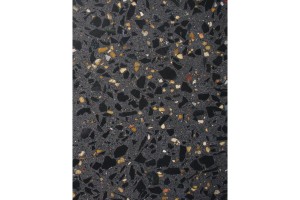
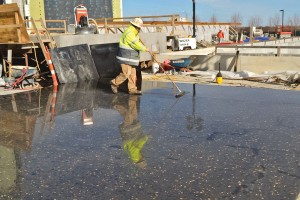
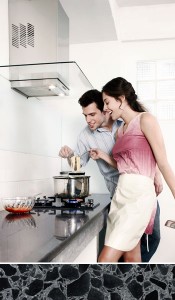

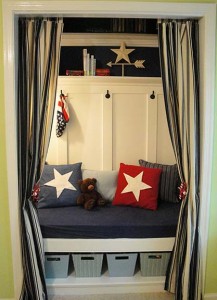
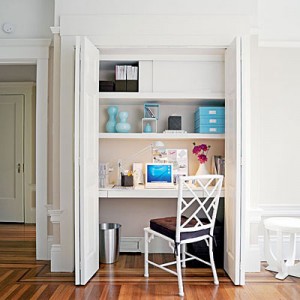
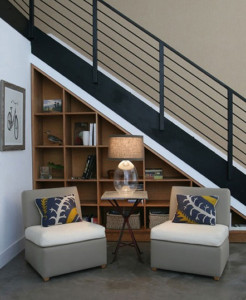
I really appreciate this article and the attempt to bring sustainability “home”. And I do so love the new addition to the SLAM and am proud of it just from an architectural standpoint. The “green” stuff is awesome too of course. But my recommendation is to always attempt to do the most with the least. I think SLAM makes some of the most, but it’s a flashy public building. And while USGBC is great, it sometimes misses the bigger point (you don’t get so much credit for what you did not do). Sustainable design is first and foremost, smart design.
A couple of comments if I may, as you speak of cost-friendliness and the approachability of sustainable design decisions for your home.
First, the shades at SLAM are automatic and photosensitive, which are awesome but costly. It’s more effective and less costly to pay attention to your window orientation and size, and then use things like vegetation to control unwanted sun. And there are glass coatings now that do the heavy UV-blocking lifting, with little to no additional charge.
Second, the Curava is beautiful and high-funcitioning but again is expensive and is a bit overkill on the exterior of a house. Local stone/masonry is a great alternative.
Third, one really important item when it comes to natural ventilation in a home (or business) is simply understanding how air flows as a function of high/low pressure and temperature. For example, you cannot just open one window and get air flow (there must be two, ideally with one opposed). And hot air naturally rises, which is one trick to how they cool houses in a desert, and why ceiling fans can be an energy saving device in the winter too.
Fourth, I do love capitalizing on often-forgotten or unwanted space. Capitalize on stud cavities and stair risers for storage. Consider also using built-ins as replacement for construction elements, like a cabinet/storage wall that separates rooms (no stud wall required), or stepped cabinets that replace stairs, not just built under them.
Sustainable Design is about making smart decisions appropriate to place and function. Tack on “solutions” are what drive up costs and often derail “green” efforts.
Just trying to get the conversation going, as productively as possible. Thanks for the article.